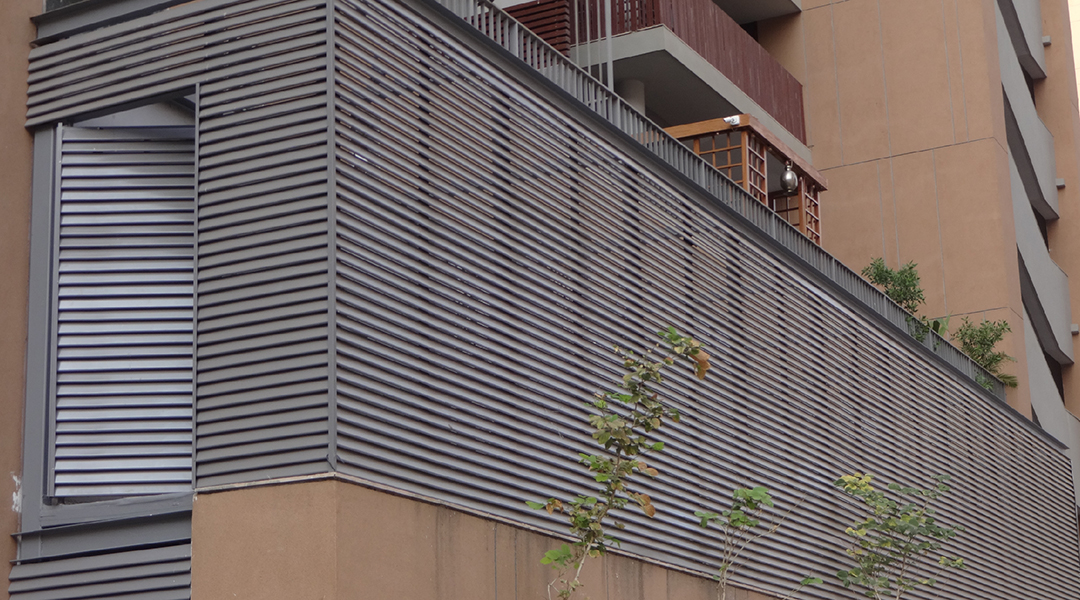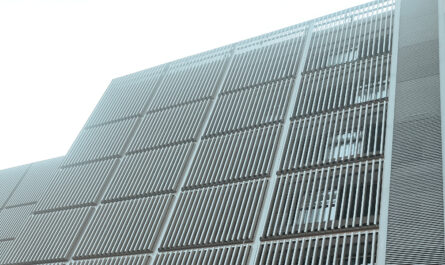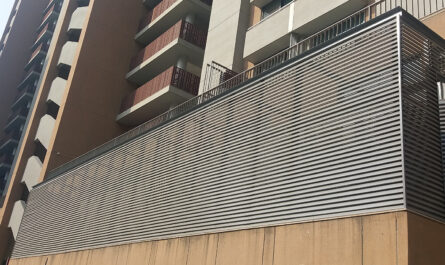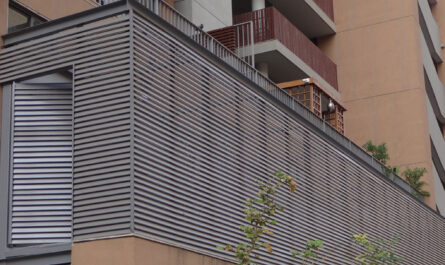Louvers in modern architecture are important elements that combine beauty with essential functionality. Their design and engineering play a big role in making a building more energy efficient, with excellent air ventilation, and overall appearance.
Design and Functionality
Precision Engineering
- Aerodynamic Shaped Louvers: These profiles are aerodynamically designed which means they allow air to pass through them easily to improve airflow and prevent resistance. This not only improves ventilation but also saves energy by letting the natural airflow regulate indoor temperatures efficiently.
- Customizable Configurations: Most louvers can be customized to suit different designs and architectural needs. They are even customizable in terms of sizes, angles, and spacings to perfect the amount of light control and ventilation according to a project’s specific needs.
Sustainability
Modern louver design would be incomplete without considering sustainability. Here’s how they add that:
- Energy Efficiency: Because louvers regulate both sunlight and airflow, they keep artificial heating and cooling systems from being used so much. Therefore, the energy use and energy expense associated with the building are minimized, contributing to sustainability.
- Recyclable Materials: Many of the louvers are made from materials that are not only durable but also recyclable, further enhancing their sustainability profile. This material choice is in accordance with green building practices.
Durability
An outer louver should ensure it will remain durable enough to protect it against environmental conditions such as:
- Corrosion Resistance: Louvres, being great-quality ones, often acquire protective coatings that help improve their resistance to rust and corrosion. Such treatment prolongs the lifespan, especially in harsh climatic conditions.
- Resistance to Impact: Exterior louvers are of rugged construction, which can handle debris or severe weather, leaving their structural integrity intact over the years.
Targeted Maintenance Practices
Exterior louvers will perform and last if targeted maintenance practices are put in place. Here are some tips on how to properly maintain your exterior louvers:
1. Seasonal Maintenance
- Dust, dirt, and debris may settle and get lodged in the louvers ruining their looking and functionality. How often to clean: At least twice a year, but preferably more often if pollution or dirt levels are high. Method: A soft brush and cloth with mild soap and water. Do not use abrasive cleaners, which may injure the finish. Clean the faces of both sides and any integrated drainage systems.
2. Inspect Damage
- Regular checks are to see possible upcoming problems. Some visual checks are continuously checked for damages such as dents, rust, and any loose facets. Ignoring them would worsen any problem until it becomes severe. Fasteners and Hinges: All fasteners and hinges should be tightened. Tighten any loose screws or bolts, and, where necessary, replace broken bits.
3. Protective Coatings
- Protection coatings can add good serviceability to louvers. Have protective coatings recoated every few years, depending on your surroundings, to maintain their protection from corrosion and fading. Silicone Seals: These seals can keep moisture at bay through the joints and seams, especially in the areas which receive heavy rainfall.
4. Seasonal Maintenance
Exterior louvers may face challenges depending on different weather conditions:
- Spring and Fall: Check for buildup of debris, leaves or snow that might block the louvers and clear the passageway to ensure efficient airflow and water flow.
- Winter Precautions: In colder climates, look out for ice formation that could damage the louver shutters. Gently remove the snow to prevent an uneven weight
5. Professional Inspections
Though routine care can be carried out by the owners, it is also a good idea to schedule periodic inspections by professionals every few years. Professionals can evaluate the state of the louvers, which they identify as having problems that might not be so apparent.
6. Educate Users
the louvers are part of a big building, teaching others how to care for them can help. Make them aware of the necessity of clearing obstructions from the louvers and encourage them to report any problems promptly. Engage them in regular inspections to ensure the effective operation of the louvers.
Conclusion
Exterior louvers require an appealing design and functionality to enhance the aesthetic value of a building, energy efficiency, and durability. Understanding the precision engineering behind such products and putting up targeted maintenance measures enable building owners to ensure their longevity and provide optimal performance. With proper care, exterior louvers can benefit for many years, contributing to efficient sustainable architectural solutions.




